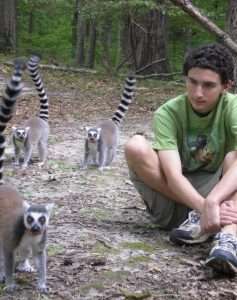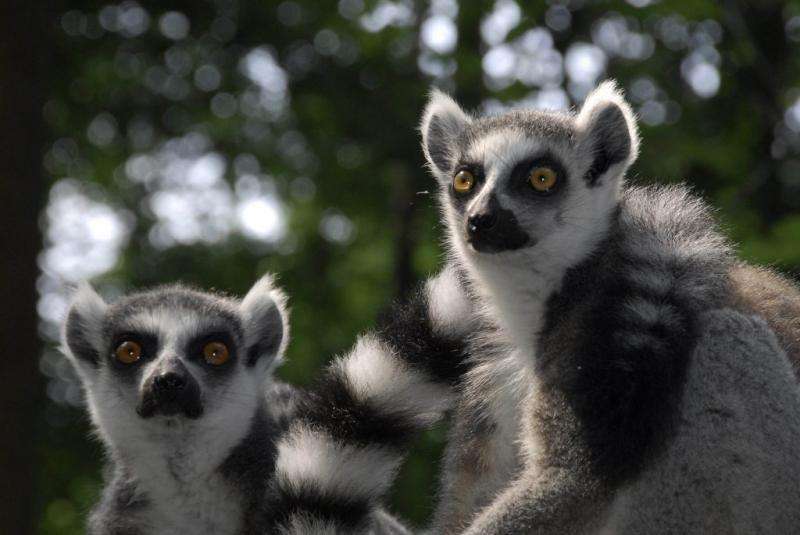Arizona State University graduate student Joel Bray got hooked on lemurs while working as an undergraduate research assistant in the Hare lab. Credit: Duke University
Duke professor Brian Hare remembers his first flopped experiment. While an undergraduate at Emory in the late 1990s, he spent a week at the Duke Lemur Center waving bananas at lemurs. He was trying to see if they, like other primates, possess an important social skill. If a lemur spots a piece of food, or a predator, can other lemurs follow his gaze to spot it too?
First he needed the lemurs to notice him. If he could get one lemur to look at him, he could figure out if other lemurs then turn around and look too. In similar experiments with monkeys and chimps, oranges had done the trick.
"But I couldn't get their attention," Hare said. "It failed miserably."
Hare was among more than 200 people from 25 states and multiple countries who converged in Durham this week for the 50th anniversary celebration of the Duke Lemur Center, Sept. 21-23, 2016.
Humans look to subtle movements in faces and eyes for clues to what others are thinking, Hare told a crowd assembled at a two-day research symposium held in conjunction with the event.
If someone quickly glances down at your name tag, for example, you can guess just from that eye movement that they can't recall your name.
We develop this skill as infants. Most kids start to follow the gaze of others by the age of two. A lack of interest in gaze-following is considered an early sign of autism.
"Gaze-following suggests that kids are starting to think about the thoughts of others," Hare said. "And using where others look to try to understand what they want or what they know."
Ring-tailed lemurs are among several lemur species known to follow the gaze of other lemurs. The ability to look where others are looking is considered a key step towards understanding what others see, know, or might do. Credit: David Haring, Duke Lemur Center
In 1998 Hare and researchers Michael Tomasello and Josep Call published a study showing that chimpanzees and multiple species of monkeys are able to look where others are looking. But at the time not much was known about cognition in lemurs.
"When you study dogs you just say, 'sit, stay,' and they're happy to play along," Hare said. Working at the Duke Lemur Center, eventually his students discovered the secret to making these tree-dwelling animals feel at home: "Lemurs like to be off the ground," Hare said. "We figured out that if we just let them solve problems on tables, they're happy to participate."
Studies have since shown that multiple lemur species are able to follow the gaze of other lemurs. "Lemurs have gone from ignored to adored in cognitive research," Hare said.
Provided by Duke University
























